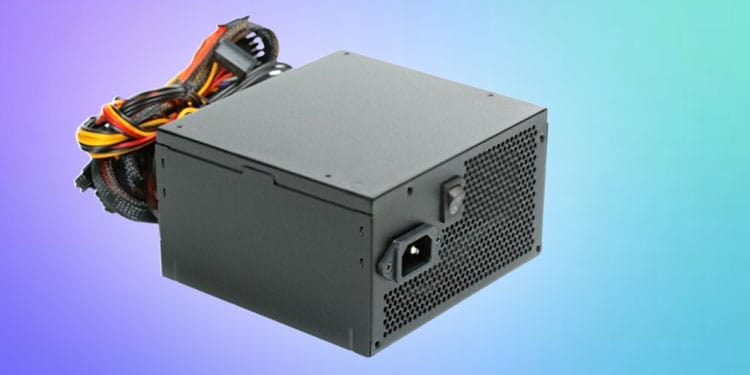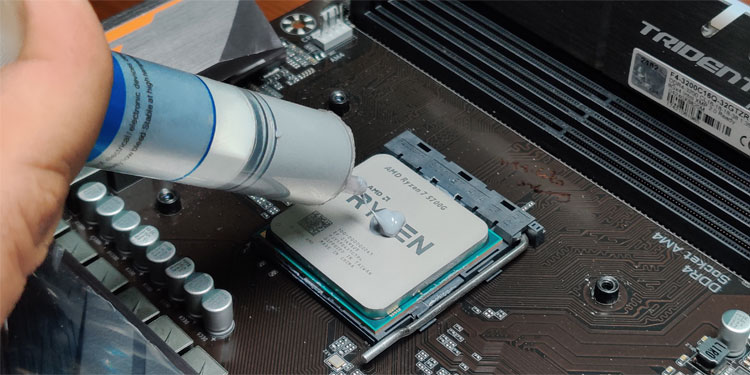CPU is only a single chip with pins and has no moving parts. Also, there is no need for frequent installation and removal of CPU for a normal computer user. As a result, CPUs can function normally for 10 or 20 years with moderate or even heavy performance. However, if it suffers from any physical damage or abnormal heating, it can die within a few days as well. So, we cannot point out a specific value for its life span. Having said that, there are still some factors that can affect the processor negatively.
Factors Affecting CPUs’ Life
Even though the CPU can last for decades, there are certain factors that determine its life. Let’s look at a few of them here.
Quality of CPUHeatQuality of CPU Fan, Thermal Paste, and Heat SinkPower Supply Unit and VRMFrequency and Intensity of its usageHandling of the CPUMaintenance
How Does a CPU’s Life Decrease?
Having said that. let’s take a look at various factors that can lower the CPU’s life below. So, it can stop working only if there are some physical damages or other factors taking a toll on its performance.
Improper Thermal Dissipation
The workload on the CPU generates intense heat. So, every manufacturer provides several means to dissipate the heat, such as a fan, thermal paste, and heat sink, and keep the temperature of the CPU in check. Hence, if these components fail to work properly, then the heat cannot be removed from the CPU, and its temperature rises beyond the threshold. In earlier computers, higher CPU temperature could damage it instantly. However, nowadays, the performance gets throttled, and the temperature does not reach much higher values. But still, the CPU’s life shortens significantly. Let’s look at how thermal dissipation can get affected.
Low Quality or Damaged Fan and Heat Sink
The CPU fan and heatsink are the most crucial component for heat dissipation from the processor. It sits over the processor and transfers its heat to the surrounding. So, if the CPU fan is not working or connected properly, then the heat won’t get dissipated, causing the temperature to increase excessively. The heat flow will also get affected if the fan speed is not up to the mark. As a result, the CPU heats up beyond its normal range, and its life reduces in the long run.
Poor Air Flow and Dust Accumulation
The CPU Fan works by pushing the hot air outside from the computer. If there is not proper space for airflow or the room itself is at a high temperature, then the hot air can get trapped inside the computer, preventing heat dissipation. This will lead to rising in the temperature of the CPU and other hardware. Similarly, dust accumulation is inevitable in a computer setup. When a larger amount of dust gets collected on the CPU fan, heat sink, and motherboard, it insulates the components and prevents heat conduction. Thus, the heat flow away from the CPU lowers, affecting the processor’s life.
Inefficient Thermal Paste
At a microscopic level, the CPU surface is not smooth and consists of gaps on it. This can house small air packets, lowering the conduction of heat from the CPU to the fan. So, to fill these gaps, we use thermal paste in between the processor and the fan, making it airtight. If the thermal paste is of low quality or has depleted, then the fan may not be able to remove all the heat from the CPU. As a result, the temperature rises, and the CPU gets affected over time.
Poor VRM and Power Supply Unit
VRM, or the Voltage Regulator Module, takes the voltage from the power supply unit and supplies only the required voltage to the components. As the CPU and other electronics work at much lower and more precise voltage, the VRM provides that specific power to those components. If the power supply or the VRM does not provide the calibrated power to the CPU, then it can instantly damage the processor. Even if the CPU does not gets damaged at the very instant, its functionality can take a severe toll, leading to a lower lifespan. This can happen if the quality of the VRM or PSU used in the motherboard is subpar or malfunctioning.
Overclocking and Overvolting
Most avid computer users overclock their CPU to get the maximum performance out of it. Overclocking means running the processor at a higher clock speed for better functionality. On top of that, you may also have overvolted the CPU, as an overclocked processor works better at a higher voltage. As a result, the temperature of the CPU increases a lot, causing excessive heating and cooling cycle. Over time, this reduces the processor’s life and leads to its death sooner.
Improper Handling
A CPU consists of a number of pins to perform the necessary functionality. Some CPUs do not have pins on them, but they are present on the CPU socket. Nevertheless, if any pins on the processor or the socket get damaged, then the CPU is likely to fail. Also, The CPU can get affected by static charges while disassembling or installing the component if you do not ground yourself. This is because the static charge may produce sudden electric surges on the CPU, damaging it. Furthermore, spilling drinks and water is also a serious threat to the processor’s life.
How Can You Prolong CPUs’ Life?
If you keep using the CPU, ensuring proper cooling and a stable power supply, then its life will extend itself. Apart from this, there are several methods you can use to care for your CPU and keep using it for a long time.
Clean the CPU and Other Hardware
You should develop the habit of cleaning your PC more often to clear off the accumulated dust. But, since the CPU is much more delicate, you should take extra care while cleaning the processor. You should ground yourself first to disassemble the components. Then, you can clean the fan and heat sink with a blower or compressed air, along with a microfiber cloth. Similarly, you should rub off the remaining thermal paste and use isopropyl alcohol to properly clean off the surface as well as the pins. Make sure you do not bend or break any pins. Apart from the CPU and fans, you should also clean the wires, motherboard, and other hardware components following a similar procedure. This will provide better conduction of heat through the heat sink and other components, improving the CPU’s life.
Maintain Proper Airflow
You should keep your system in an open space rather than under a desk or congested in a small area. If you do not have much space, you could at least keep it in such a place where the airflow is enough. If available, you can keep the system in a cooler room as well to prevent hot room air from entering the system. Also, you should arrange the casing fans such that they do not interfere with each other’s airflow. Simply using a large number of fans without keeping an eye on the inlet and exhaust of air does not guarantee proper airflow. Also, you should routinely clean the port behind the casing and other holes to allow the air to enter and leave the casing. In the case of a laptop, you should consider hard surfaces such as tables or books instead of mattresses and beds. It would be much more helpful to use a laptop cooling pad under it.
Use High-Quality Fan, Power Supply and VRM
You should always look for a CPU fan that can run at the necessary speed to cool your processor. If your motherboard supports changing fan speed, you can run it at a higher speed to lower the CPU temperature further while running heavy programs. Similarly, we recommend you check the number of phases of VRM while buying the motherboard if you are looking to get a new one. The more the phase of VRM, the more stable voltage it supplies. Also, you should not look at cheap PSUs to save some money and get a better one for a stable power supply. This will, in turn, improve the health of the CPU and prevent its sudden damage due to surges.
Re-apply Thermal Paste
The depleted or dried thermal paste may not provide the necessary conducting domain to dissipate heat. So, you should scrub off the remnant of the paste and re-apply the fresh thermal paste. This fills the minute air gaps on the surface of the CPU and the bottom of the fan and provides better heat conduction. As a result, the temperature of the processor remains within the limit, prolonging its life.
Avoid Overclocking
You should let the CPU run at its normal factory clock speed and not overclock it to gain more juice out of it. If you have overclocked, you should revert the overclock settings of your CPU to prevent the larger increase in temperature. You can do this by resetting the BIOS settings or uninstalling the application used for overclocking. If you do need to overclock, then you can set the settings while gaming or at the time of need. This will lower the duration of excessive heating, thus improving the age of the CPU.
Undervolt the CPU
Manufacturers provide a voltage rating for the CPU that is a little higher than the actual working voltage. That means the CPU can function normally even if it receives slightly less voltage. And since the heat generated depends directly on the supplied voltage, you can lower the CPU temperature by undervolting the CPU. Undervolting allows it to run optimally without an excessive rise in temperature. As a result, the CPU sustains for a longer period.
Handle Carefully
While you install or disassemble a CPU, you should handle it well to protect it from physical damage, static charges, and contamination by fluid. You should always ground yourself while handling the CPU and keep it in an anti-static bag. You should also insert and remove the processor carefully without damaging the pins and touching the surface with a dirty hand. Similarly, we advise you not to bring any fluid near the working area.












